It was busy at around noon on Wednesday, 26 September, at the full soil vegetables open days. These were held at Syngenta in Wevershoof, the Netherlands. The fields were full, but it is also time for lunch. There was Gina sweet pepper soup and cauliflower to taste. There were also a few companies that are presenting their systems. Above all, there are many visitors from many different countries. "Yesterday we had 400 visitors of 50 different nationalities. Our CEO, Eric Fyrwald, was here, interviewing clients", says Brigitte van der Steen, Marketing Operations Lead.
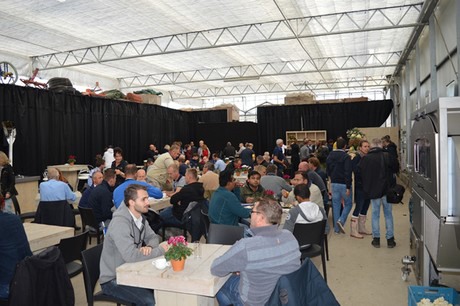
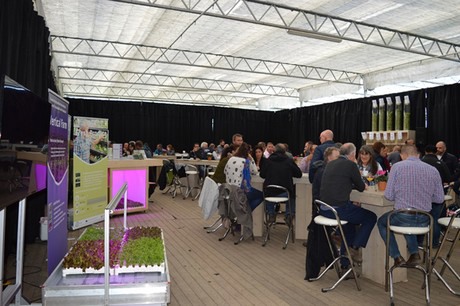
Nice and busy, even before lunch.
Koenraad Meyns is the company's new Product Manager for cauliflower and Brussels sprouts for Northwestern Europe. He took visitors out to the fields. Koenraad has been Product Manager since the summer of 2018. He, immediately, had many new concepts to introduce to the cauliflower sector. One of these is cauliflower that remains white, even without being covered. "This year, we launched the Andromeda variety commercially in the Netherlands, Germany, and the United Kingdom. It is a variety for the mid-range segment. It is also suited for warmer countries. Good to know is that this cauliflower is an even brighter white two days after being harvested than while it is being harvested", he says.
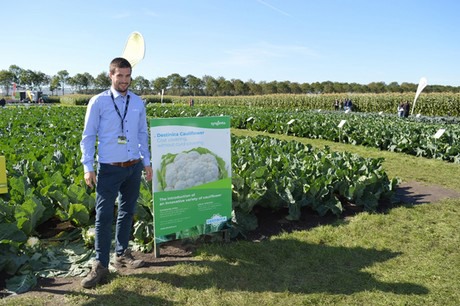 Koenraad Meyns at the Destinica field.
Koenraad Meyns at the Destinica field.
Next year, Syngenta will launch the umbrella brand name, Destinica. All current and future cauliflower that stays white will be promoted under this label. Koenraad says, “The fact that these cauliflowers cope better with harsh light has various advantages. So, you do not need to cover these vegetables to protect them against sunlight. This results in considerable cost savings. It is also easier to harvest these cauliflowers. They are, now, easier to spot in the field as they are no longer covered with leaves."
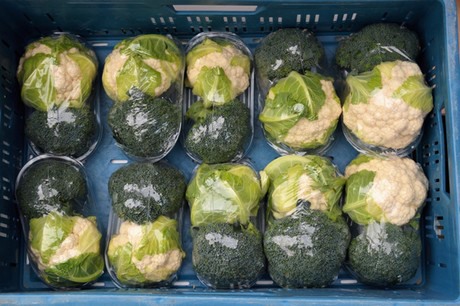 Andromeda cauliflower variety in a mini combination with broccoli.
Andromeda cauliflower variety in a mini combination with broccoli.
As a market leader in the area of fresh market cauliflower, the company does not stay with one variety. "The Clarina is the biggest variety in the Netherlands. This type of cauliflower is clubroot resistant. This makes it an interesting variety in Belgium. There, there are more problems with clubroot than in the Netherlands. We then also have the Speedstar for the early market.”
The no longer new, but strikingly colored cauliflowers, also have pride of place in the fields. There are green, orange, and purple ones. "They are all grown naturally", Koenraaf emphasizes. There is also renewal happening here. "The Clementine is our new variety with an orange color. The orange color is now even brighter than with the predecessor, the Flamestar. After being steamed, the color is now better preserved."
Keeping consumers buying these kinds of cauliflowers is a challenge. "Many people buy this kind of cauliflower for the first time as an impulse buy, out of curiosity. It is much more difficult to get consumers to come back and buy these cauliflowers for a second or third time. The expectations clients have these colors play a role in this. The taste, for example, differs from the regular, white cauliflower. These are really something different, something used in the catering industry with the presentation of dishes."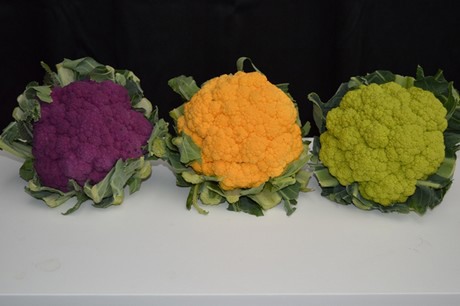 A colorful pallet with the Graffiti, Clementine, and Green Storm.
A colorful pallet with the Graffiti, Clementine, and Green Storm.
Mechanical cleaning
From cauliflower to Brussel sprouts. Here, Michiel van Mol joins in as crop advisor. “Our goal in all the sectors is to offer varieties from early to late. This is for the important fresh markets in the Netherlands, Germany, and the United Kingdom. It is also for the industry in, especially, Belgium”, he says.
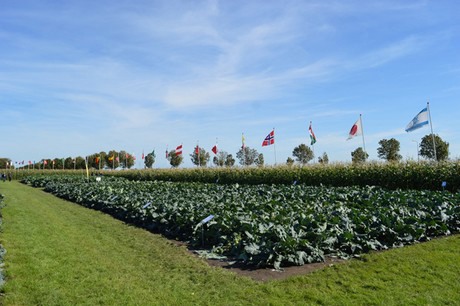 The broccoli field.
The broccoli field.
Then a whole range of varieties followed. From the Abacus, an early cultivation variety, to the Trimstar, a type that is grown in November and December. “We will be launching this variety in 2019. It is suited for mechanical cleaning because the Trimstar has elongated sprouts. We expect this type of cleaning to become increasingly important. This is why we are focusing on developing varieties that fit in with this", explains Michiel.
Syngenta also has early through to late varieties for the industry. They also have kinds that are suited to all kinds of soils. “Here, the Cobus is the standard December variety. The Thamus is an improved version of this. The Thamus also regrow quickly after difficult growth periods like the difficult last summer. This variety has better sprout lengths, longer stalks, as well as more sprouts."As soon as the base, yields, quality, and shelf-life are good, we can look at the details, at refining things, says Michiel. “For example, one of these details is frost resistance."
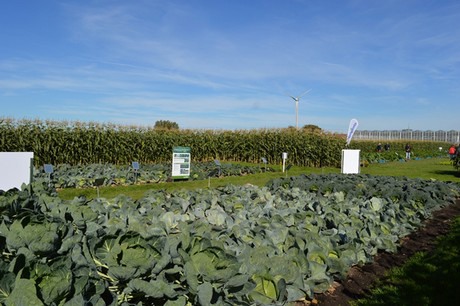 The resistance field: Here, Syngenta tests varieties alongside standard varieties to see how the varieties keep without pesticides being used.
The resistance field: Here, Syngenta tests varieties alongside standard varieties to see how the varieties keep without pesticides being used.
Contributing to good planning
For broccoli, Syngenta has three new varieties for the fresh market. “Beachy, Beany, and Besty: varieties for the future. All three of these have a genetic advantage over the older varieties. The goal with this type of vegetable is to create more reliability for the growers. It will also be easier to plant them. With the Beany, a farmer can, for instance, do good planning in the winter already. This variety is suited to being harvested from mid-September to the end of the harvesting season. Thanks to the nice, mushroom shaped and excellent head quality, this variety's quality remains high until the end", says Koenraad.
Other points of interest are good leaf and head health. "For the future, we are also looking for light resistance in broccoli. Furthermore, we are trying to make one variety dense (with a fixed head). So, small but with a good weight."
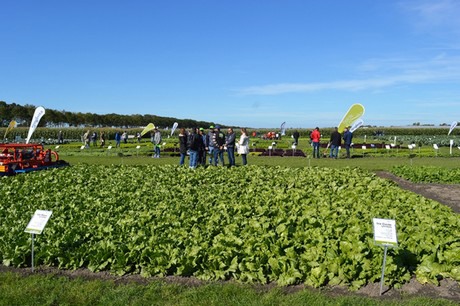 Ice Wave and Ice Circle, new iceberg lettuce varieties.
Ice Wave and Ice Circle, new iceberg lettuce varieties.
Nice pipe line
A segment where Syngenta has a so-called 'nice pipe line’, is iceberg lettuce. Brigitte, who went along to the field, says, "Our aim it to ensure that the farmers no longer have to lie awake, worrying about their crops. We, therefore, try to take steps in the area of reliability. Ice Circle, a spring and autumn variety, and Ice Wave, a summer variety, have this reliability. Ice Circle is a variety with fast, uniform growth and is well-filled with even layers. The heads lend themselves to a pretty presentation in a box of ten for the fresh market. However, this variety is also grown for the industry. Ice Wave also grows quickly and uniformly and has a high yield percentage. It is also tipburn resistant, can weather dry and wet weather and is resistant to, among other diseases, Pythium”, she explains.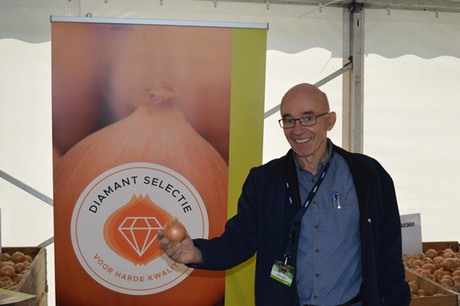 Wolfgang Ott with the SG8359 variety.
Wolfgang Ott with the SG8359 variety.
Extremely difficult
Although the onions are not in the fields, there was much attention for this sector too. Wolfgang Ott, Product Manager: Onions, had a tent where he displayed various varieties. Special attention was given to the Diamant Selection. This is a selection of varieties that scores well when it comes to firmness. "This is important for sea transportation, for instance. This can take up to four weeks. So, shelf life is important. As is the strong skin that needs to protect the onion underneath, and a good skin firmness. Resistance to sprouting during long-term storage is also essential", says Wolfgang.
On display was the Medaillon, a variety that grows well under conditions with little moisture, thanks to a strong, deep root system. Then, there was the Motion, which is very well-suited for the Flevopolder. Besides these, the 'future' was present. "The SG8359 variety is an improvement on the Motion, especially in the area of harvesting volumes", he says.
Tomorrow, 5 October, Syngenta will have a vegetable stand on the Plein in The Hague. This will contain the so-called "vegetables of the future'. See the announcement here.
For more information: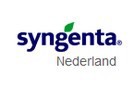
Syngenta
www.syngenta.nl
Koenraad Meyns
[email protected]
Michiel van Mol
[email protected]
Brigitte van der Steen
[email protected]
